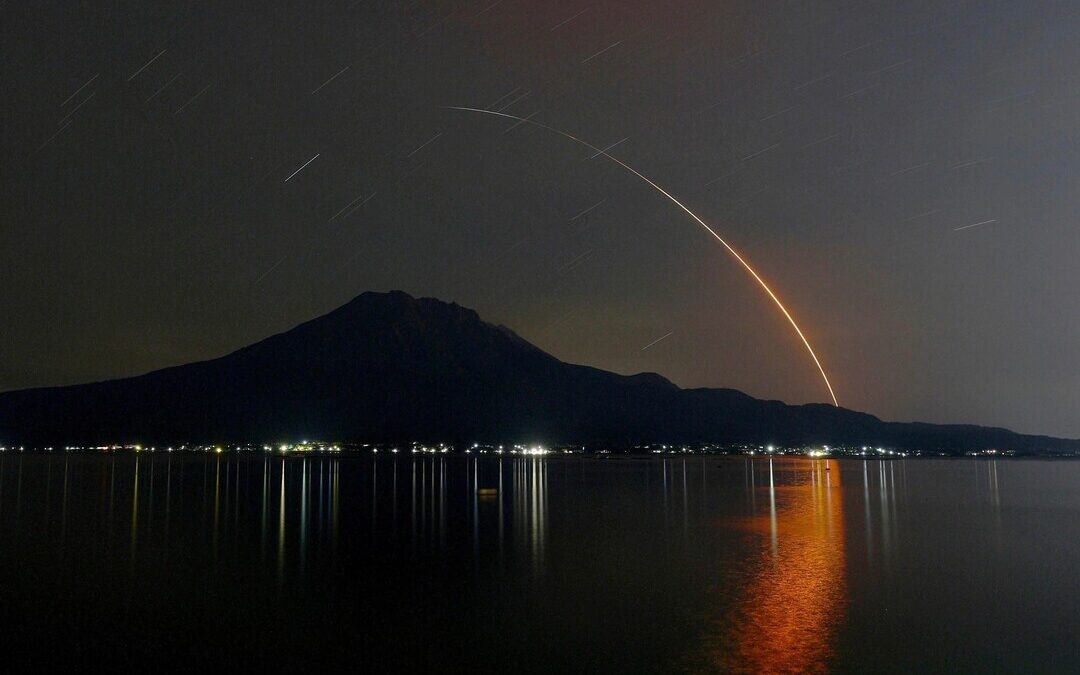Japan Launches Climate Monitoring Satellite on Final H-2A Rocket Flight
Japan retires H-2A rocket with successful launch of climate satellite aimed at tracking global greenhouse gas emissions.
Japan successfully launched a climate change monitoring satellite Sunday aboard its flagship H-2A rocket, marking the final flight of the country’s workhorse launch vehicle before it is succeeded by a newer, more cost-effective model, according to the Associated Press.
The H-2A rocket lifted off from Tanegashima Space Center in southwestern Japan, carrying the GOSAT-GW satellite. AP reported that the satellite separated safely from the rocket approximately 16 minutes after launch and entered its planned orbit.
Emotional Farewell for a Trusted Workhorse
Sunday’s flight was the 50th and final mission of the H-2A, which has been a cornerstone of Japan’s space program since its debut in 2001.
With a near-perfect success rate of 98 percent, the rocket’s retirement signals a transition to the H3 series, which Japan hopes will enhance competitiveness in the global launch market.
Keiji Suzuki, a Mitsubishi Heavy Industries official who oversaw rocket launch operations, called it a highly emotional moment. “I’ve spent my entire life at work not to drop H-2A rocket,” Suzuki told AP. “All I can say is I’m so relieved.”
Scientists and engineers exchanged hugs and handshakes in the control room following the successful launch, which had been delayed for several days due to an electrical systems malfunction, AP said.
Next-Generation Satellite to Monitor Greenhouse Gases
The payload, Global Observing Satellite for Greenhouse gases and Water cycle, or GOSAT-GW, is the third in a series of Earth observation missions focused on tracking carbon dioxide, methane, and other greenhouse gases.
According to AP, it will begin distributing high-resolution climate data, including sea surface temperatures and precipitation levels, within one year.
The data will be shared globally, including with the U.S. National Oceanic and Atmospheric Administration, officials told AP.
Legacy of the H-2A
The H-2A has launched a wide array of scientific missions, including Japan’s moon lander SLIM and the Hayabusa2 asteroid probe.
Mitsubishi Heavy has managed launch operations since 2007, while the Japan Aerospace Exploration Agency developed the rocket.
“It is a deeply emotional moment for all of us at JAXA as a developer,” said Hiroshi Yamakawa, JAXA president, during a news conference, as reported by AP.
The liquid-fueled H-2A, augmented by two solid rocket boosters, experienced only one failure in its operational history, in 2003.
Looking Ahead: The H3 and Epsilon Systems
With the H-2A now retired, Japan is accelerating development of its two successor platforms: the larger H3 and the smaller Epsilon, the latter being developed by IHI’s aerospace division.
Suzuki said the conclusion of H-2A operations would free up resources to focus on the H3’s evolution.
Designed to carry heavier payloads at approximately half the cost of the H-2A, the H3 has now completed four successful launches following a failed debut in 2023.
However, Japanese officials told AP that further cost reductions are needed for the H3 to compete effectively in the commercial launch sector.
Japan views a robust and commercially viable launch capability as central to both its space ambitions and national security.
Nirmal Menon
Related posts

Subscribe
Error: Contact form not found.


